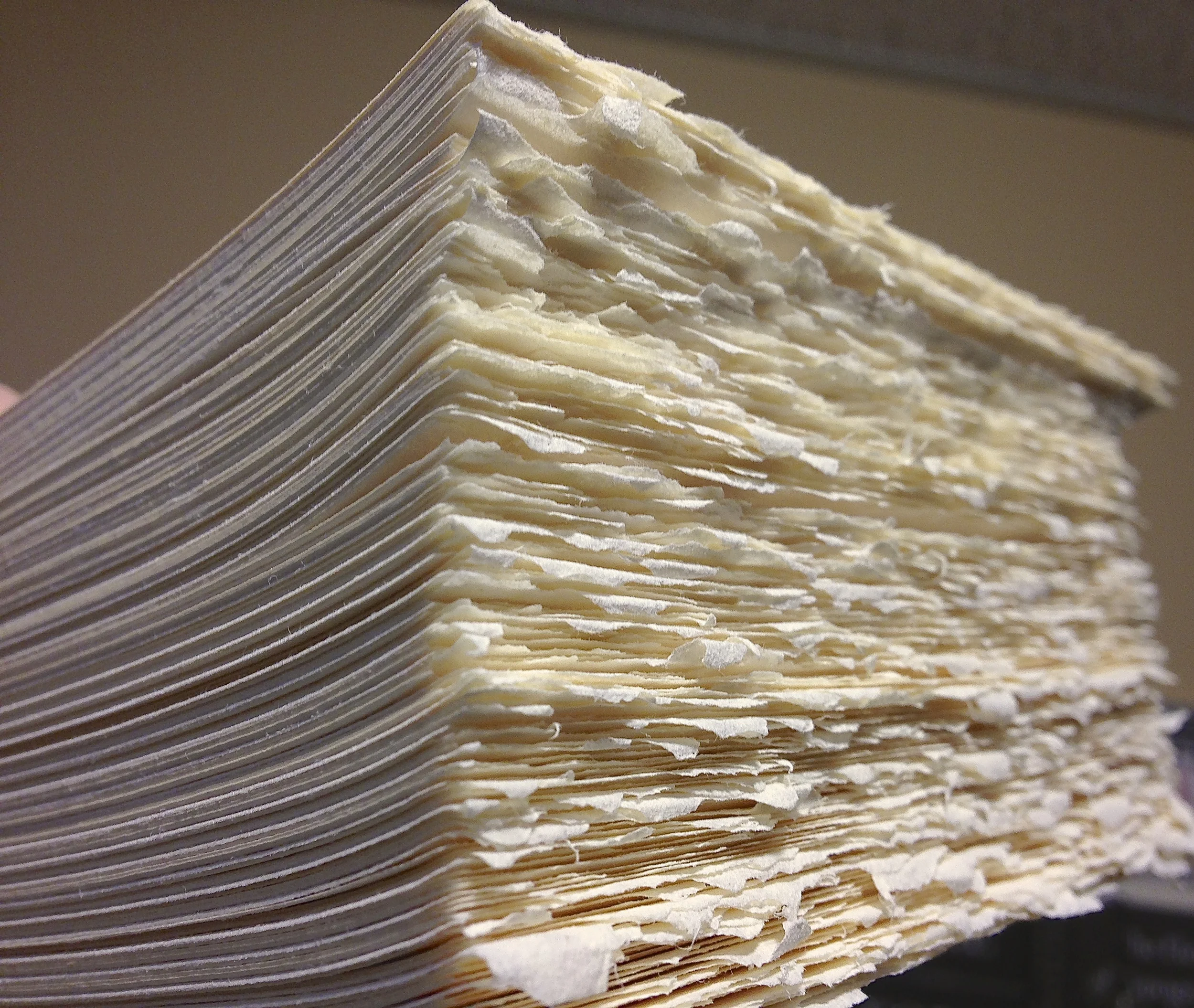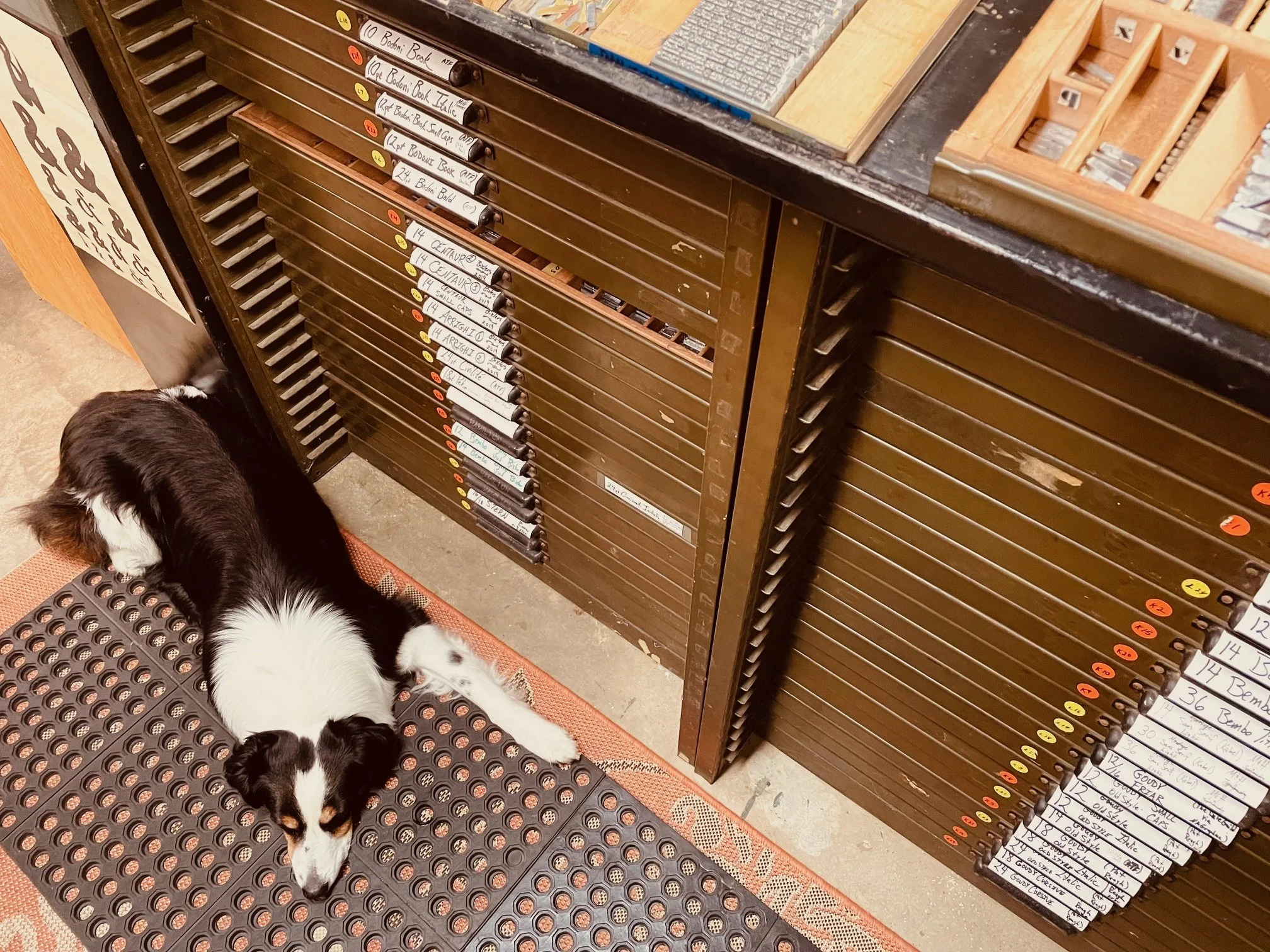Here are a handful of videos and photos showing various parts of the process of making a letterpress printed book. This particular project, for a private client, involved making one hundred 60-page books and took many months to complete.
This first video is of me printing some of the book’s pages. Having already hand-set the text with metal type and locked that type up on the bed of the printing press (a Challenge model 15MP), I am cranking the sheets of paper through the cylinder press, one by one, to letterpress print that type.
The next photo and video shows “The Boss”, a guillotine paper cutter with a 23-inch blade, made in St Louis, Missouri, around 1895. It makes short work of trimming the printed book pages.
For those who like to watch paint dry, here’s a nearly-nine-minute video of me hand-sewing the printed pages together to make one (out of a hundred) sturdy book. Actually, this is one of the most enjoyable parts of the process to me!
Last but not least, here is a brief look at putting all that metal type away after printing the book. Each letter and space goes back into its designated little slot in the wooden case that holds all the type. There it will await the next project!
Linji, the Australian Shepherd Shop Dog, finds all of this incredibly boring…












 Not to mention our "b"s and "d"s!
Not to mention our "b"s and "d"s!

